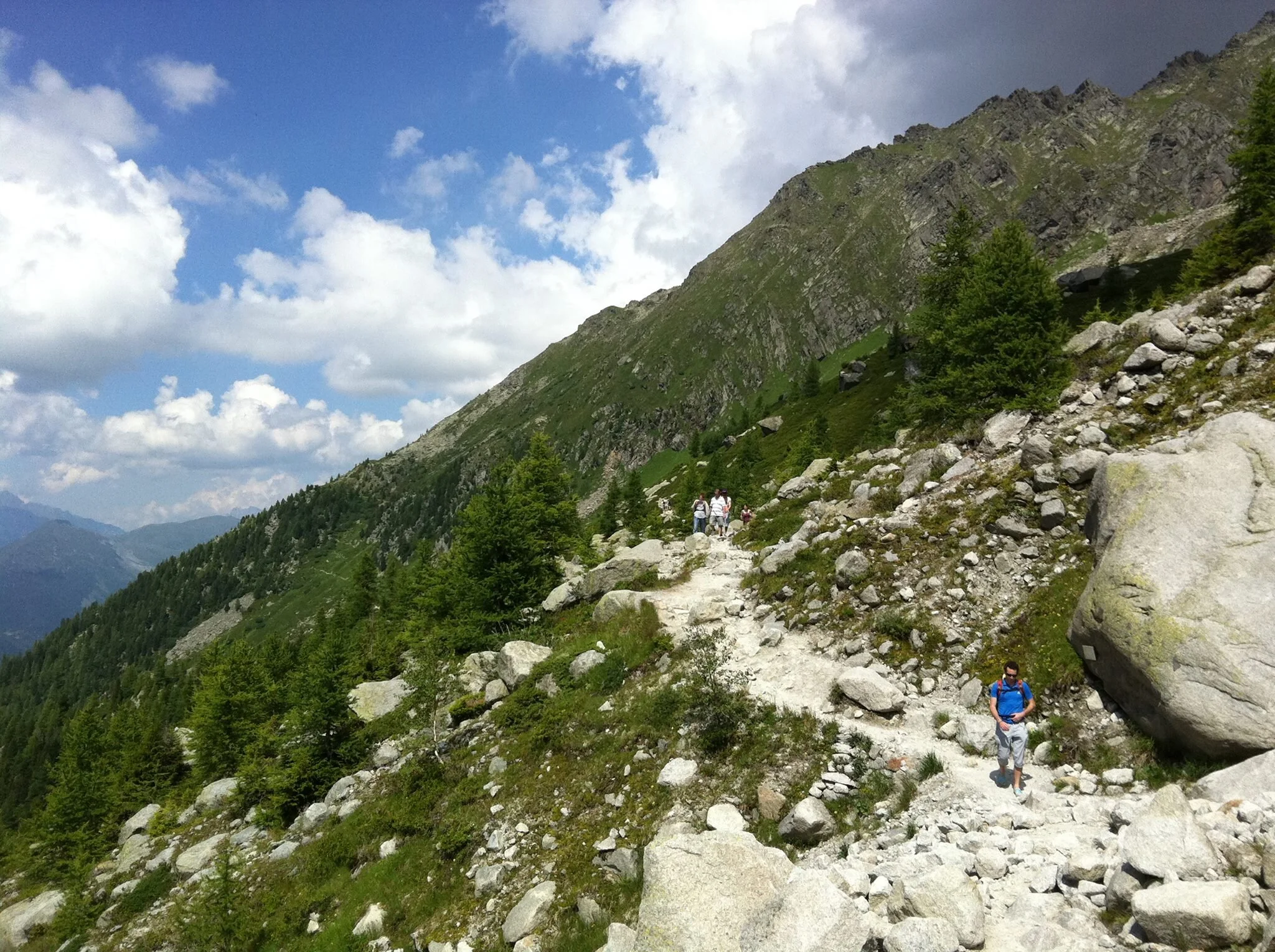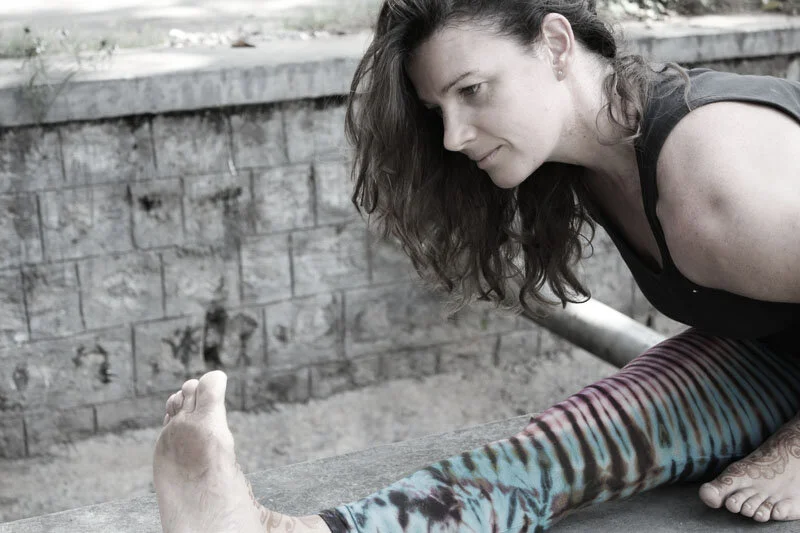From Here to There Lies a Path - Is it Practice?
Published June 2016 in SOULSCAPE
What is a path? A path is a trajectory from here to somewhere else—leaving one destination or state of being, or reality and arriving into the next. It is a movement action from one point to another that, in the tangible world can be viewed as either voluntary or involuntary.
Taking A Step
‘When life throws you lemons, make lemonade’ is a sophisticated position to take when involuntary circumstances arise. This way, the hardships of life become our great teacher and by making the best of each situation transformation is served.
A voluntary movement however is instigated by conscious choice—when it is your turn to make the move on the chessboard, and this is where the focus of this article lies. What are the underlying motivations that drive our conscious decisions for a state of change? What is it that moves us and what type of approach do we take when we seek improvements in life? In the same way that getting in and out of a yoga posture is very much part of the pose, the manner in which we approach our movements in life is very much part of getting to the destination.
There are two frames of mind that lead to voluntary movement and one creates a healthy approach that paves the way for Practice.
Aversion
The first frame of mind is aversion. We leave a place or state of being, largely because it makes us uncomfortable. We would rather be somewhere else and make the move to run away elsewhere. ‘I cannot stand what I see in front of me’, ‘I am not good enough’, ‘I have to be better in order to be worthy of receiving love’. The ego rings the alarm, crying “show me the exit door!’ The notion of anywhere but here that creates a quick and reactive staccato movement triggered by a deep discomfort to stay still and face whatever it is that has managed to get under our skin. We run in order to get away from the shadow side of ourselves and in a bid to avoid the discomfort that the confrontation would otherwise bring up. We all run in different ways.
Observe yourself the next time what you consider as ‘failure’ arises – What would it take to be able to love this version of yourself regardless?
“Yoga is the practice of tolerating the consequences of being yourself”
- Dinabandhu Sarley
Practice
The second way of navigation is perhaps more thoughtful, baby steps. We simply choose to leave a place through the recognition that we are not where we would like to be yet with ourselves. We walk forward on a path, regardless of comfort or discomfort, for a greater goal.
It is a softer approach to growth that stems from worthiness rather than worthlessness. An ability to stay relatively comfortably where you are but with a useful pride that recognises your true potential to be larger and brighter and also, a willingness to take the steps to get there.
A subtle difference lies between the two.
Both are departures away from a current reality and it is apt to say that they can both also reflect different levels of integration along the same path. What a Practice already has though is a collected presence, with enough space to take on a stable purpose and core motivation. With a polished and focused motivation in the driver’s seat, an automatic strength and bravery arises to venture beyond superficial likes and dislikes into a willing to take on awkwardness, discomfort and hardship.
Over time, a longevity and resilience begins to surface. It picks you up when you fall and dusts you off with a tender smile. There is enough space and contemplation built into the journey of Practice to settle into the truth that everything is ok and in its own time. It is an acceptance that the very word Practice means you are not there yet. What you are doing is moving, progressing and attempting to improve for a greater purpose and so, when you are ready for it, you welcome discomfort and view the initial judgement of failure as modes of refinement and insight along the way.
There is a sweetness to the type of practice that is born out of, as well as one that applies love and compassion back onto itself. It is also a very efficient type of practice. Consider all the things that you have sacrificed in the name of love. You might not have been capable of the same hardship if the love for that person, place or passion were not there.
Movement & Pause, Peas in the same pod
As a collective, we have to go beyond our favouritism for continual development and constant movement in order to be truly sustainable. The alternative to this is a fast and furious burnout—something on the rise with our people and land alike. Yet in our action world, neither is just staying still or disengaging an answer within itself.
For example, is the notion to move because the grass is greener on the other side a bad thing? Yes, if it stems from a habitual pattern to look elsewhere. It is our behavioural patterns that repeatedly pry our eyes away from the present context and into the mental justifications of the mind. Our ability to access the actual beauty of the grass right under our feet is crippled—we have taken a glimpse at the grass but have not stayed long enough to experience it in all its glory.
On the flip side, the desire to walk towards to the next field can simply stem from the recognition that you are free to move, and the grass is indeed greener there.
The answer does not lie in the actuality of whether you stay or leave but in the relationship you have between what is in front of you versus where you want to go.
It is in the context.
A practice encompasses both the ability to pause and move. Observe the whimsical play between the movement of notes and the gaps of stillness in a beautifully crafted piece of music. Both on the same team, these apparent opposites mutually support each other through a greater yearning for the music itself to blossom.
By taking a neutral stance between pause and movement, start and destination, we become mindful that a movement towards one thing simultaneously means being taken away from something else—that chasing the stars is simultaneously walking away from the earth. That to grasp firmly onto one thing, is to have to let something else go. It is looking at life from a much larger spectrum of awareness and directing the reason for our actions towards the actual situation instead. It is a decision grounded in context.
Things take time
Realistically, it is a gradual shift between the two frames of mind and every voluntary departure from a fixed point is a hybrid of both worthiness and worthlessness in varying proportions. Change, in its very nature, requires a shedding away that causes pain if it is done too hard or too fast. Taking the time to stroke our hearts and love our selves in the process of change and development is crucial. The contradiction that we are perfectly fine just the way we are, but simultaneously choose to grow needs to be integrated and brought to a state of balance within our selves. If we fail to remind ourselves of this, we run the risk of falling back into worthlessness during our development. This triggers the viscous cycle to run faster, do more, and keep going but never actually getting there.
Self-reassurance along our path is greatly undermined. A good indicator of spiritual growth, however, is this very journey towards more and more softness and compassion, towards others, but more so backstage, behind our own curtains and inwardly towards our selves.
What is a path of practice without the heart? It is a place that is not there yet.


